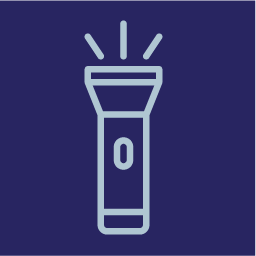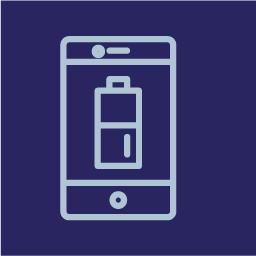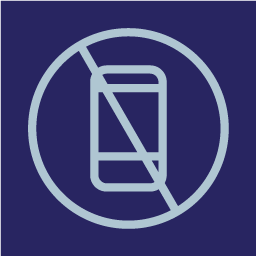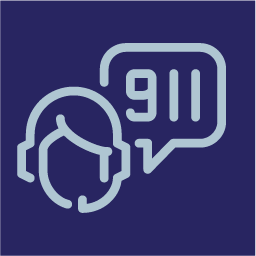Preparing for Severe Weather Events & Other Emergencies
Steps you can take to help protect you and your family
Click here to download this report.
Extreme weather events such as hurricanes, wildfires, and snow and ice storms are becoming more commonplace endangering Canadians, damaging property, and posing a risk to critical infrastructure, including telecommunications networks.
Canadian telecommunications providers are continually investing to strengthen their networks to better withstand extreme weather events and other natural disasters. They have also partnered with governments, public safety officials, power companies, and each other to help maintain connectivity when people need it most.
Despite these preparations, power supply, poles and cables, and other equipment can still be impacted, sometimes resulting in temporary service outages. To prepare, there are steps you can take to protect you and your family.
Prior to Event

1. Monitor Weather and Be Ready for Emergency Alerts
While some extreme weather events occur suddenly, most are forecasted days in advance. You can track approaching inclement weather in a variety of ways, such as smartphone weather apps, online weather services, and through local news.
Wireless Public Alerts (WPAs) are emergency alerts issued by authorized government and emergency management officials to warn the public about a variety of matters, including extreme weather events and natural disasters, and often provide directions from public safety authorities. More info on the Alert Ready system, including details on device compatibility can be found at www.alertready.ca.

2. Prepare for Power Outages
Even if telecommunications networks have not been damaged by a severe weather event, a power outage at your home or business can impact your ability to access the internet or make phone calls. To prepare for power outages:
➜ Fully charge devices
When you know a storm or other extreme event is approaching, make sure your devices, like your smartphone and laptop, are fully charged. It is helpful to have charged back up batteries or power banks, and extra chargers such as car chargers or solar powered charging devices.
➜ Backup Power Supply
While backup generators are the ultimate solution for home and business power outages, especially when an extreme weather event causes a prolonged outage, there are more affordable solutions, such as an Uninterrupted Power Supply (UPS), that can power essential communications equipment like your internet modem, Wi-Fi router, and cordless phone.
➜ Understand your home phone service
Loss of power to your home will impact most home phone services (i.e., cordless phone and VoIP phone modems require power). You should determine if your phone or phone service rely on your home power supply. If they do, obtaining a backup power supply should be considered.

3. Create an Emergency Communications and Critical Information Plan
Create an emergency communications plan that includes the contact information of close family and friends, as well as direct phone numbers of local services (e.g., fire department, nearby hospital, police service, school, and veterinarian).
Periodically take photos and/or video of your property and valuable items for insurance purposes. Back up files and copies of important documents, like insurance policies, in secure storage such as a cloud storage service.
During Event and Recovery Period

4. Preserve Battery Power
While it can be tempting to use your devices for entertainment as you wait for power restoration, if you do not have a reliable source of backup power you should take steps to preserve battery power for as long as possible. These include:
- Adjusting the settings on your devices for low battery use and turn down screen brightness
- Turning off Bluetooth, Wi-Fi and location-based services when you don’t need them
- Using a battery-powered radio to get updates on local weather conditions and critical information from local emergency management authorities
- Only using your battery-powered devices for essential purposes

5. Help Reduce Network Congestion
During a large-scale emergency such as a natural disaster, mobile networks can become congested with an influx of mobile voice calls and data traffic. This can hinder people’s ability to contact emergency services and affect communications among emergency service personnel. To reduce network congestion:
- Do not use your mobile phone to make phone calls unless it is an emergency
- Use SMS/texting or email to connect with others. These services use less network capacity and may work even when phone service has been interrupted
- If you must make a phone call, keep your conversation as short as possible, and if your call is not connected wait at least 10 seconds before redialing
- Do not use mobile wireless networks for data-intensive uses, like streaming video or non-emergency related internet use

6. Placing 9-1-1 Calls
If you have a working landline phone and a mobile phone, use the landline phone to help reduce traffic on mobile networks.
Mobile phone service is designed for 9-1-1 calls to default to whatever wireless network is available. In other words, provided it has power and is within range of a wireless network, a mobile phone can make a 9-1-1 call even if your service provider does not have an operational cell tower nearby or your phone does not have a SIM card.
Due to increased network congestion because of the natural disaster or because your device is seeking an alternate service provider’s network, it may take a few seconds longer for your 9-1-1 call to connect. If your call is not immediately connected, wait a few seconds to allow your device to make a connection. If your call is not connected, hang up and wait 10 seconds before redialing. Do not immediately redial.
If you are still unable to successfully place a 9-1-1 call, try removing or turning off your device’s SIM card. In rare circumstances, the presence of the SIM card may prevent your device from connecting to an alternative service provider’s network.
